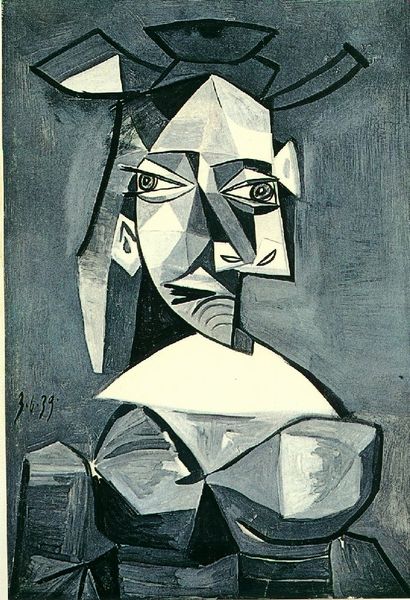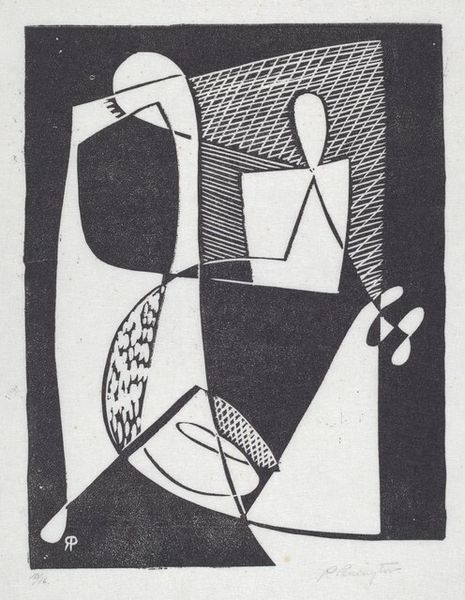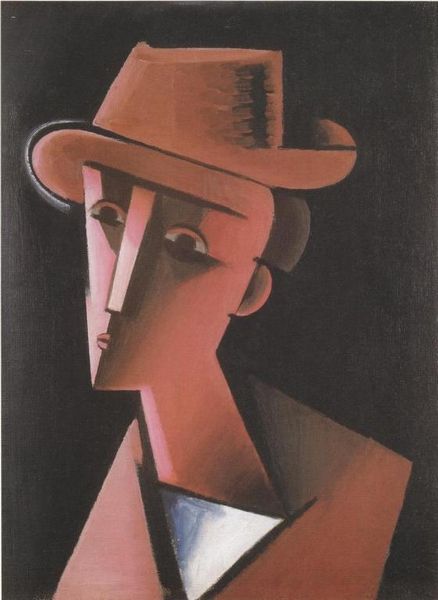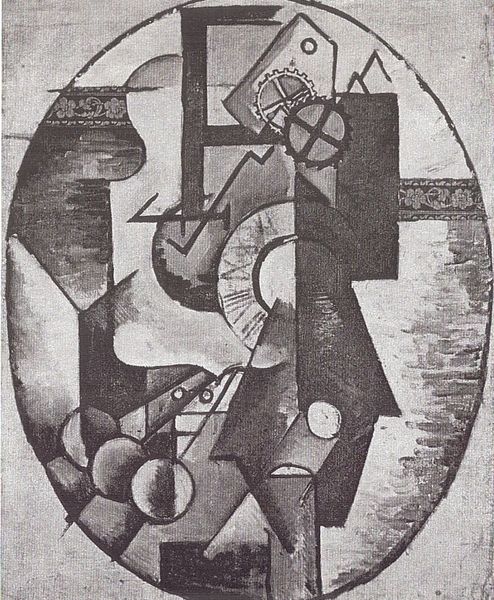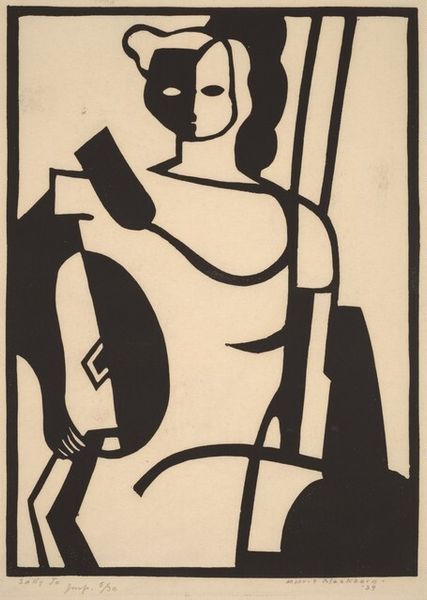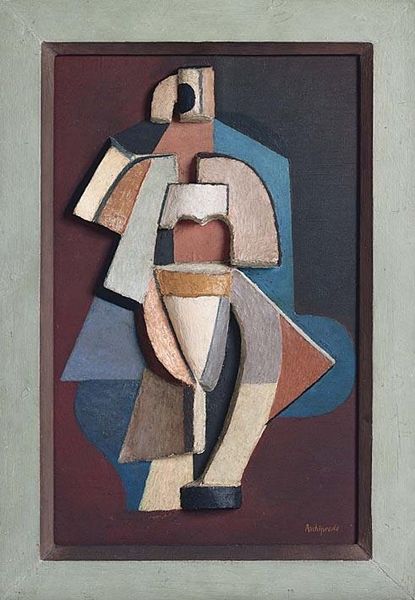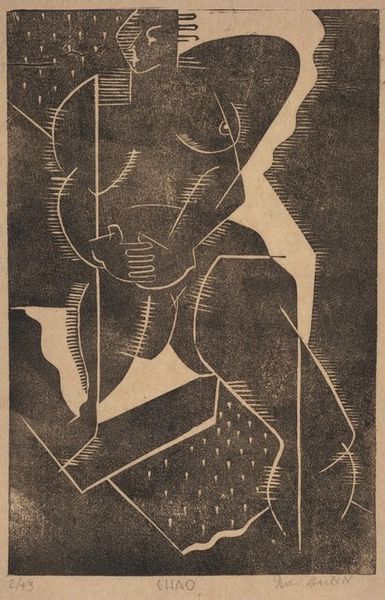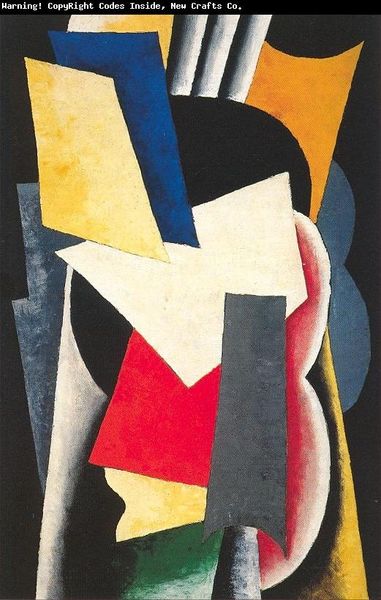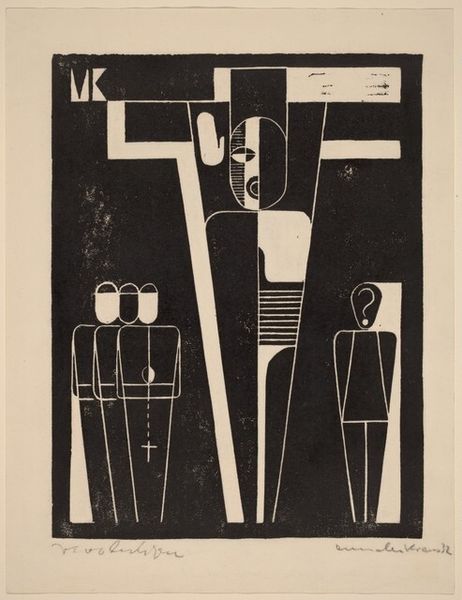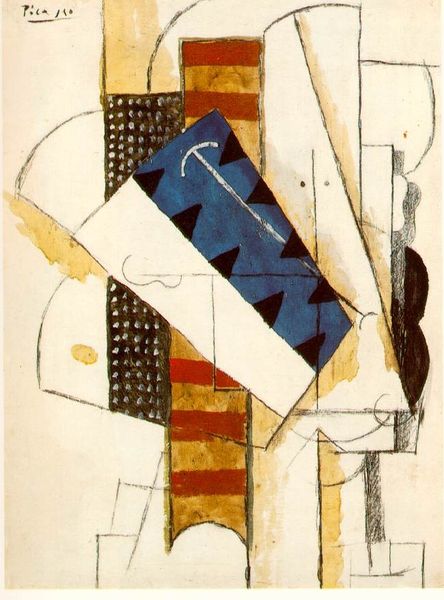
graphic-art, print
#
portrait
#
stencil art
#
graphic-art
#
cubism
# print
#
figuration
#
geometric
#
line
#
portrait drawing
#
history-painting
#
portrait art
Copyright: Public domain
Curator: We're standing before Louis Marcoussis’s "The Cardplayer," created around 1921. It's a print, a graphic artwork demonstrating Cubist principles. What strikes you first? Editor: The starkness, really. The limited palette and bold, geometric forms give it a somber, almost austere feel. There's a certain anonymity, the figure reduced to planes and angles. Is it meant to reflect something of the interwar period? Curator: Absolutely. Marcoussis, like many artists after the First World War, was grappling with a fragmented world. The flattened perspective and geometric breakdown mirror a society trying to rebuild after immense trauma. It’s impossible to disconnect this from the social mood and collective anxieties. The choice of figuration is also not random, it speaks about the will to reconstruct an individual after destruction. Editor: And gambling... isn't that about risk, and possibly, the pursuit of dreams in a world in flux? Do you think there is something there related to gender identity ? Curator: Indeed! I think it certainly speaks to the masculine milieu of the era, considering the game of cards and the coded intimacies and transactions between the players. We cannot exclude the fact that the artist also participated of these kinds of exchanges. The reduction of features almost renders the player without age. Editor: The style is reminiscent of analytic Cubism. How does Marcoussis push it further in "The Cardplayer?" Curator: It represents the sitter as a reconstruction of line and planes, without clear facial features other than an emphasized ear. By flattening space, he blurs the line between object and ground. He creates an active dynamic relationship with his audience by positioning the viewer into an active position within this setting, a gesture for us to meditate about the nature of representation in an era characterized by unprecedented turmoil and innovation. Editor: It's fascinating how a seemingly simple composition can hold so much historical weight and reveal critical elements of its time. I would say that its lack of naturalism also reflects a changing society with the advent of new technologies of representation such as cinema. Curator: It really does ask us to reconsider familiar visual languages, in search for a representation with social and historical meanings and with potential for reflection. The piece shows in my view an acute political reading of artistic potential within society.
Comments
No comments
Be the first to comment and join the conversation on the ultimate creative platform.
